The Two
RV Gypsies: Full-Time RVers
traveled to Salt Lake City, Utah
September 20, 2012 |
|
Fall foliage
|
|
|
|
|
|
|
.jpg) |
|
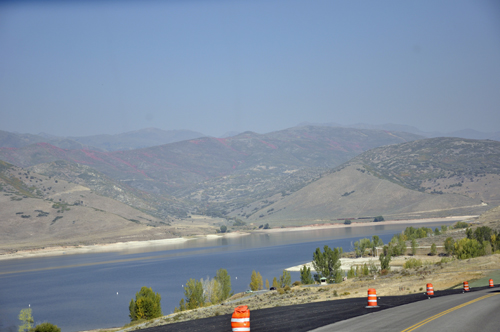 |
|
Below: A steep hill in
case trucks
lose their brakes - this is often seen on highways. |
Below: One of many "roller coaster"
roads
(3, 4 or more deep dips in the road)
|
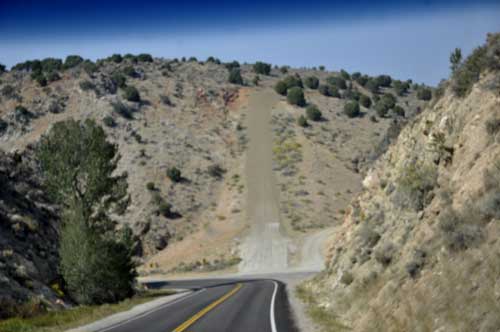 |
|
 The Great Salt Lake is located in the northern part of the U.S. state of Utah, and is the largest salt water lake in the western hemisphere, and the fourth-largest terminal lake in the world. In an average year the lake covers an area of around 1,700 square miles, but the lake's size fluctuates substantially due to its shallowness. In terms of surface area, it is the largest lake in the United States that is NOT part of the Great Lakes region. The Great Salt Lake is located in the northern part of the U.S. state of Utah, and is the largest salt water lake in the western hemisphere, and the fourth-largest terminal lake in the world. In an average year the lake covers an area of around 1,700 square miles, but the lake's size fluctuates substantially due to its shallowness. In terms of surface area, it is the largest lake in the United States that is NOT part of the Great Lakes region.
The Great Salt Lake has no outlet besides evaporation and has very high salinity, far saltier than sea water. The Jordan, Weber, and Bear Rivers (the three major tributaries) deposit around 1.1 million tons of minerals in the lake each year, and since water (but not the minerals) is constantly being evaporated, the concentration of minerals increases further. Because of its unusually high salt concentration, most people can easily float in the lake as a result of the higher density of the water, particularly in the saltier north arm of the lake, Gunnison Bay.
The lake lies in portions of five counties: Box Elder, Davis, Tooele, Weber, and Salt Lake. This is only a small area of the Great Salt Lake - and it was mostly dried up on this date. |
|
Below: Not being familiar with the area,
the two RV Gypsies had trouble finding access to the Great Salt Lake,
but they did find this one area. |
|
 The Great Salt Lake is fed by three major rivers and several minor streams. The three major rivers are each fed directly or indirectly from the Uinta Mountain range in northeastern Utah. The Great Salt Lake is fed by three major rivers and several minor streams. The three major rivers are each fed directly or indirectly from the Uinta Mountain range in northeastern Utah.
The BEAR RIVER starts on the north slope of the Uintas and flows north past Bear Lake, into which some of Bear River's waters have been diverted via a man-made canal into the lake, but later empty back into the river by means of the Bear Lake Outlet. The river then turns south in southern Idaho and eventually flows into the northeast arm of the Great Salt Lake.
The WEBER RIVER also starts on the north slope of the Uinta Mountains and flows into the east edge of the lake.
The JORDAN RIVER does not receive its water directly from the Uintas, rather it flows from freshwater Utah Lake, which itself is fed primarily by the Provo River; the Provo River does originate in the Uintas, a few miles from the Weber and Bear. The Jordan flows from the north part of Utah Lake into the southeast corner of the Great Salt Lake. |
|
|
|
|
|
Below: Looking back towards the parking
lot |
|
|
Below: Driving along the road, another
view of the Great Salt Lake, and some kind of a pipeline. |
|
|
Below: A view
of the Great Salt Lake at another area. |
|
|

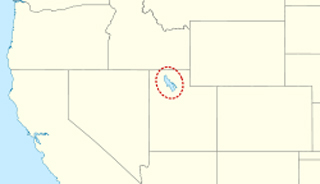
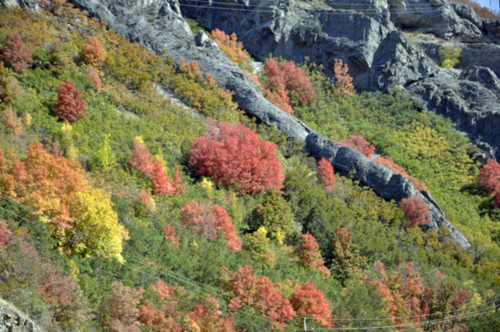
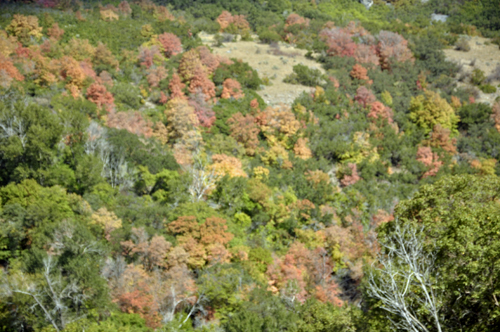
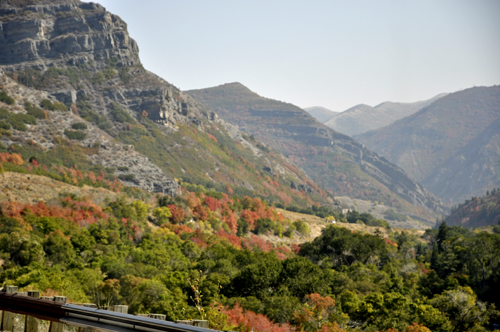
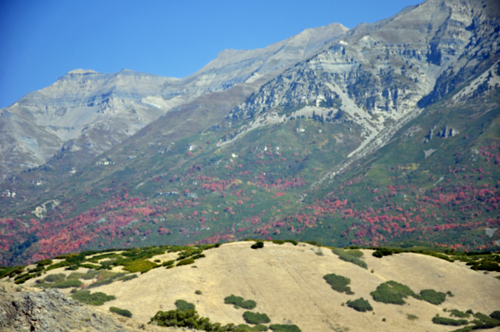
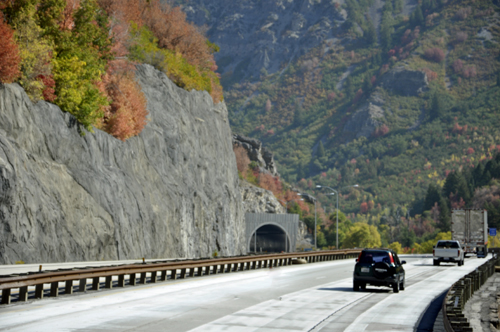
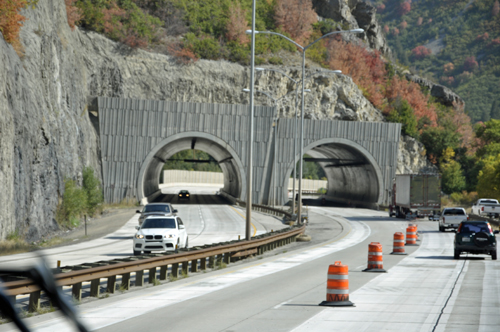
.jpg)
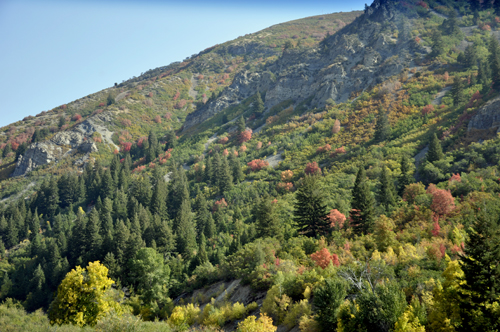

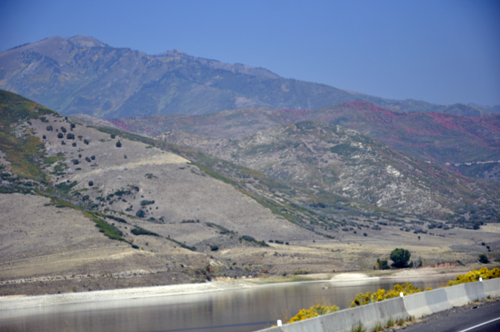

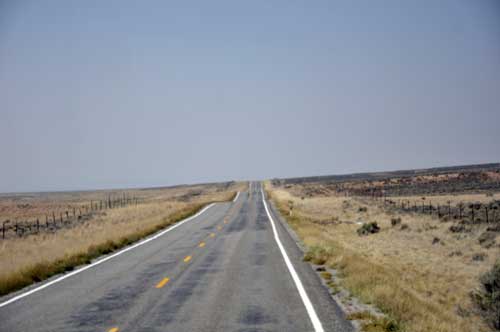


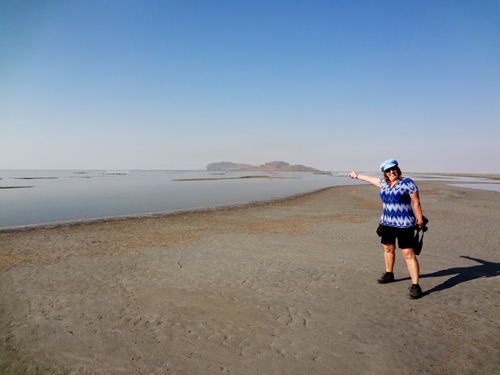
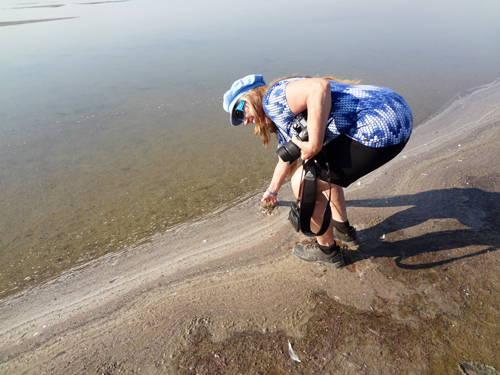
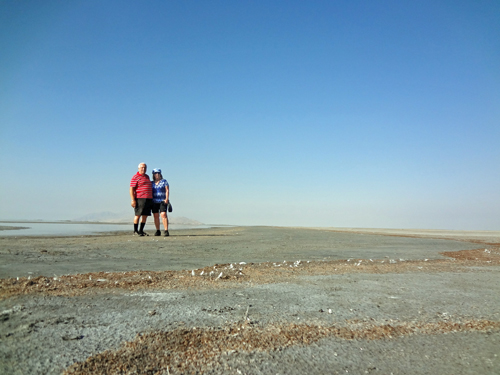
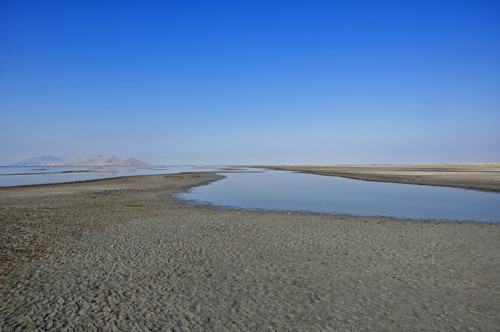
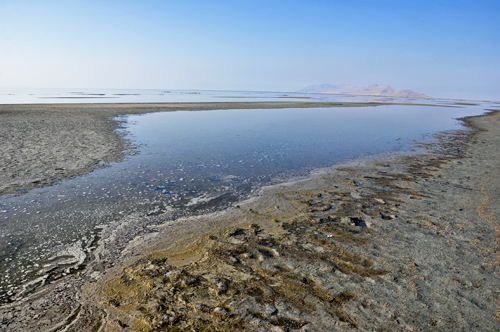

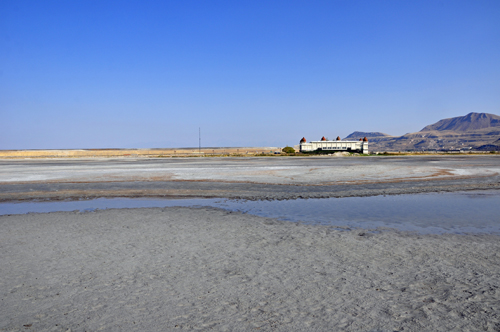
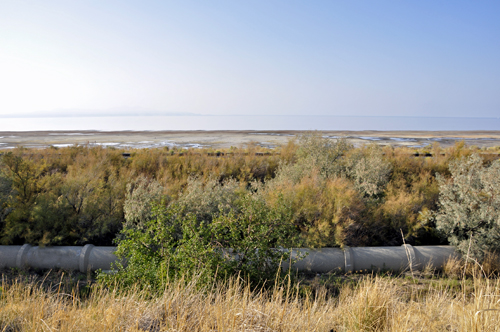
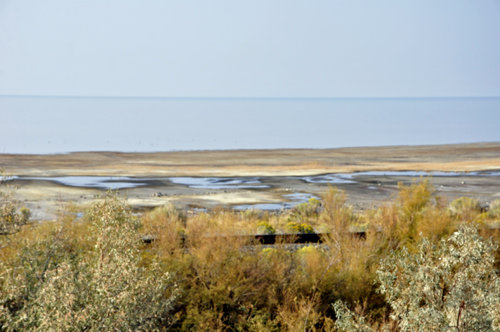
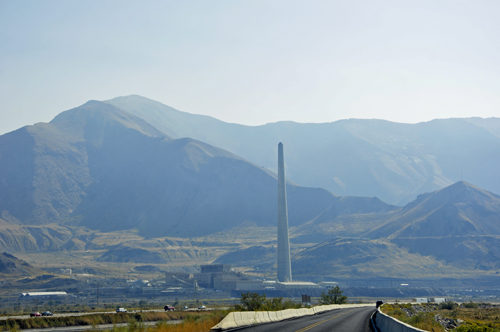
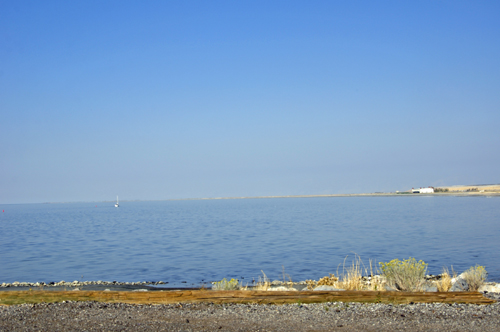
























 The Great Salt Lake is located in the northern part of the U.S. state of Utah, and is the largest salt water lake in the western hemisphere, and the fourth-largest terminal lake in the world. In an average year the lake covers an area of around 1,700 square miles, but the lake's size fluctuates substantially due to its shallowness. In terms of surface area, it is the largest lake in the United States that is NOT part of the Great Lakes region.
The Great Salt Lake is located in the northern part of the U.S. state of Utah, and is the largest salt water lake in the western hemisphere, and the fourth-largest terminal lake in the world. In an average year the lake covers an area of around 1,700 square miles, but the lake's size fluctuates substantially due to its shallowness. In terms of surface area, it is the largest lake in the United States that is NOT part of the Great Lakes region. The two RV Gypsies traveled on to
The two RV Gypsies traveled on to 
